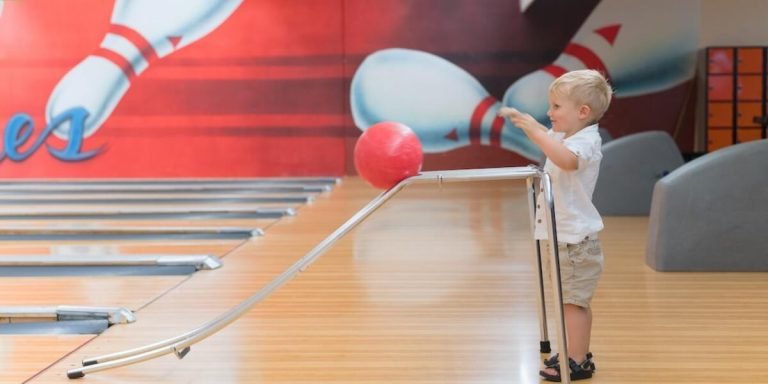SPD vs Autism: Understanding the Differences and Similarities in Childhood Disorders
Navigating the world of childhood disorders can be overwhelming, especially when it comes to untangling conditions with overlapping symptoms such as SPD and autism. An in-depth understanding of “SPD vs Autism” not only helps parents and educators identify these differences but also enables them to provide targeted support for children.
Educational resources like behavioral techniques and strategies are crucial tools for managing both Sensory Processing Disorder (SPD) and Autism Spectrum Disorders (ASD). They help accommodate unique learning needs while fostering growth. This article will shed light on the distinguishing characteristics of each disorder whilst highlighting their similarities, thereby guiding individuals towards providing appropriate educational support.
Did you know?
A little known fact is that while both Autism and Sensory Processing Disorder (SPD) can involve unusual sensitivity to sensory information, a child with SPD doesn’t necessarily show the social, communication, and behavioral challenges commonly observed in children diagnosed with autism.
Understanding the Fundamentals of SPD and Autism
When it comes to childhood education, one of the most crucial aspects is understanding and effectively managing distinctive learning needs. This becomes particularly noteworthy in the context of Sensory Processing Disorder (SPD) and Autism Spectrum Disorder (ASD), due to their unique impact on a child’s ability to learn. SPD refers to difficulties with processing information from senses such as touch, taste or hearing; while ASD affects social interaction, communication skills alongside some overlaps with sensory issues.
In recent years there has been significant growth in technology integration within special education resources which are designed specifically for these students’ individual requirements. Adaptive tech tools offer customizable settings allowing children suffering from SPD or autism an opportunity at inclusive learning experiences that assist them not only acadically but also socially by promoting engagement with others through interactive platforms.
Emphasizing this intersection between technology-driven pedagogies along with our increasing knowledge about SPD vs Autism can optimise special educational practices leading towards more precise interventions targeted toward each student’s specific circumstances. We must keep ourselves informed up-to-date so we’re able adapt strategies as advancements continue evolving within both psychological understandings related technologies thereby ultimately contributing overall wellbeing success every young learner under care parents educators alike.
Defining Sensory Processing Disorder (SPD)
Sensory Processing Disorder (SPD) is an increasingly recognized condition, especially within the realms of childhood education and special needs resources. Unveiling its complexity helps in distinguishing it from Autism Spectrum Disorder (ASD). By truly understanding the meaning of “spd vs autism”, we can create more tailored educational systems that are beneficial for all children.
The sensory world around us experiences various stimuli every moment – some loud, others silent; some soft while others hard; some bright or dull. Our brains usually process these sensory inputs smoothly to engage with our surroundings effectively. However, when this smooth processing unit fumbles regularly resulting in noticeable disruptions in daily functioning – then it could be a sign SPD.
Children with SPD often misinterpret everyday sensory information like touch and sound which could lead to behavioral problems including anxiety & depression or motor skill issues affecting movements & posture.
They may experience difficulties performing simple tasks such as buttoning shirts or using cutlery making them feel awkward among their peers at school impacting their academic performance.
Unlike ASD where difficulty lies mainly on social communication grounds along with restricted interests/repetitive behaviors highlighting clear red flags for diagnosis – spotting signs of spd might not always be clear-cut due to overlapping symptoms between these two conditions magnifying confusion amongst parents figuring out whether they should seek help pertaining ‘special ed’ services.
Differentiating Autism Spectrum Disorder
When discussing special education resources and support, it’s essential to first understand the key differences between Sensory Processing Disorder (SPD) and Autism Spectrum Disorder (ASD). This is critical for ensuring that children are given the right kinds of assistance tailored to their unique needs.
Firstly, while both SPD and ASD may have overlapping symptoms such as difficulties with social interactions or sensory processing issues, they are not the same. The main difference lies in how these disorders affect a child’s life.
Children with SPD face challenges related mainly to how they perceive stimuli from their environment. For example, background noise that many wouldn’t notice could be overwhelming for kids dealing with this disorder. However, unlike autism where there can exist varying degrees of language delay or other cognitive impairments; those diagnosed exclusively with SPD do not typically experience intellectual deficits.
For students on the autism spectrum though, struggles extend beyond just sensory processing – impacting communication skills and behavior patterns too. Ranging from mild challenges to more severe complications depending on where an individual falls within the spectrum- understanding body language or maintaining eye contact might prove tough among others because each person’s set of strengths/weaknesses is different when living under ASD umbrella term in 2023.
Identifying Signs and Interventions for SPD vs. Autism
Identifying and differentiating signs of Sensory Processing Disorder (SPD) from Autism Spectrum Disorder (ASD) can be challenging. Both conditions often show overlapping symptoms that can confuse non-specialists, leaving them uncertain about the correct diagnosis or intervention strategies.
To address this challenge in 2023, special education resources and support systems have integrated technology to help accurately recognize these disorders. Technological tools like Machine Learning algorithms are exceptionally beneficial in discerning subtle differences between SPD and ASD.
Machine learning applications are dramatically revolutionizing how we approach childhood education by providing insights that go beyond human capabilities regarding data processing speed, accuracy, pattern recognition among others – all though maintaining lucidity critical to educational environments. These technologies help educators decipher behavioral patterns more effectively hence playing significant roles in early intervention strategies.
Moreover, it’s important not just to identify but also manage both SPD and Autism responsibly once they’ve been diagnosed accurately using technological aids so far discussed. Video modelling interventions —where children observe videos demonstrating appropriate behavior—have shown promising results on students with autism while occupational therapy integrated with virtual reality sessions have seen improvements amongst children suffering from SPD. Hence simultaneously proving that carefully choosing correct technological strategy could significantly improve lives of those afflicted.
The right combination of effective identification mechanisms coupled up with considered use of technology-led interventional approaches ensures better outcomes for young learners struggling with either condition under scrutiny here making strides towards inclusivity within classrooms – one student at a time!
Recognizing Early Symptoms in Children with SPD
Recognizing early symptoms in children with sensory processing disorder (SPD) can be a challenging task due to its shared characteristics with Autism. However, it’s crucial that parents and educators understand the unique aspects of SPD vs autism.
Knowing these differences allows for more accurate identification and tailored interventions. The first step lies in understanding what each condition entails. Sensory Processing Disorder is essentially when the brain struggles to organize information received from our physical senses – touch, taste, sight smell or hearing while Autism combines impairments in social interaction—verbal and non-verbal communication—and repetitive behaviors.
When comparing spd vs autism early signs are key indicators for diagnosis considerations:
1. Fixation on certain textures: Children with SPD may show an extreme reaction or fixation towards specific textures – whether they avoid them at all costs or seek them out relentlessly.
2. Overreaction to stimuli: Kids affected by SPD often react dramatically to everyday sounds like vacuum cleaners, sirens etc., which don’t usually affect others.
3. Difficulty maintaining balance: They may struggle with tasks requiring coordination such as riding a bicycle; this differs from autistic kids who might have narrowly focused interests but no trouble balancing.
4.Oversensitivity about food selection :Children having SPD will probably display strong dislike towards different foods based on texture rather than flavour unlike their peers battling Autistic Spectrum Disorders(ASDs).
We have used in-depth knowledge to navigate adroitly through the topic of ‘SPD vs Autism‘. Now, let’s explore how technology integration plays a quintessential role:
Strategies for Supporting Individuals on the Autistic Spectrum
In understanding the dynamics of “spd vs autism”, it’s vital to focus on strategies for supporting individuals falling under the Autism spectrum. This can be particularly challenging due to a high level of individual variation in symptoms and abilities.
One key strategy involves making use of special education resources available today. Integrating technology into their learning process has shown substantial benefits, improving communication, social skills, self-control and academic challenges faced by children with autism.
Educational apps have flooded the market over recent years – ranging from ones focusing on basic skill-building like reading or math drills, up to more complex assistive communication applications that help non-verbal autistic students convey needs and feelings using images or text-to-speech features.
Artificial intelligence also plays its part through adaptive learning systems tailoring instruction according each child’s strengths weaknesses – this customised experience boosts both engagement achievement levels drastically.
Lastly there are robotic companions helping improve sociability: Robots4Autism employs humanoid robots offering modules that teach emotional recognition other social cues usually difficult grasp those along Autistic Spectrum Disorder(ASD).
Accessing Special Education Resources and Support
For parents or educators, understanding the difference between Sensory Processing Disorder (SPD) and Autism Spectrum Disorder can be a challenging task. Distinguishing these conditions is crucial as it significantly influences the techniques used for teaching children in their critical development years.
With SPD, sensory signals are not detected or organized into appropriate responses by nervous systems. In contrast to autism where symptoms revolve around difficulties with social interaction and communication combined with unique behaviour patterns. Thus tailoring educational resources becomes important while treating each differently but accurately.
In this era of technology integration in education, leveraging specialized online tools has proved highly beneficial for both ASD and SPD learners alike. Using digital platforms that offer adaptive learning experiences catered towards special needs students enables them to grasp concepts effectively at their own pace.
Furthermore, many applications geared toward therapeutic use can aid children develop skills like focus & attention span; critical aspects often impacted due to either disorder. One such example could include programs allowing kids to interact safely within controlled virtual environments which then builds up social cognition abilities without overwhelming them.
Navigating Services for Students with Sensory Processing Issues
Sensory Processing Disorder (SPD) and Autism Spectrum Disorder (ASD) often overlap, making it challenging to distinguish between the two. Yet, understanding your child’s unique needs is critical when navigating services for students with sensory processing issues.
Firstly, let us clarify what SPD and ASD are about:
– Sensory Processing Disorder: This implies a difficulty in how the brain receives, processes and reacts to sensory information.
– Autism Spectrum Disorders: These feature symptoms including social interaction difficulties or repetitive behaviors that may also include struggles managing sensory input.
Utilizing special education resources effectively requires knowledge of such nuances. It initiates by recognizing each symptom specific to either SPD or autism because they necessitate different approaches in treatment plans.
This year 2023 presents an array of digital tools which has tremendously aided our pursuit. The integration of technology into educational programs can customize learning experiences tailored specifically towards those who struggle with spd vs autism.
One such approach employs Augmented Reality(AR), now revolutionizing therapeutic methods for children dealing with these conditions. AR apps like “Bravarena” help kids become more comfortable interacting socially via fun games fostering skills relating practicing eye contact.
Moreover, tech-based therapies provide another advantage; providing quantitative data illustrating progress over time ensuring continued improvement.
Educational Tools Tailored to Learners with Autism
Understanding the unique needs of learners with autism or Sensory Processing Disorder (SPD) is crucial in developing effective educational strategies. The key here lies in identifying and accessing special education resources that are tailor-made for these children, equipped to encourage their full potential.
Firstly, let’s delve into technology-based resources designed specifically for students on the Autism spectrum and those struggling with SPD. Today’s digital advancements have led to a surge of tech tools focused exclusively on inclusive learning. These range from digital visual aids and communication software to interactive e-books and assistive technologies, all aimed at providing an enriched learning experience while bridging any possible knowledge gaps.
Digital Visual Aids: Highly visually engaging platforms can help facilitate comprehension in autistic children who often excel visually rather than verbally. Technologies like Interactive Whiteboards offer opportunities for hands-on student interaction which encourages engagement and enthusiasm towards the subject learned.
Communication Software: Children dealing with spd vs autism might face challenges expressing themselves appropriately using conventional verbal language methods but applications such as Proloquo2Go provide symbol-supported communication making it easier for them to convey thoughts precisely.
Interactive eBooks: Reading can be brought vividly alive through this medium where textual information is supplemented by sounds or movement keeping readers engaged even if they struggle concentration-wise due to sensory overload issues common both amidst SPD & Autistic individuals.
Conclusion
Understanding SPD vs Autism details from our post is certainly a first step towards better comprehension of these two developmental conditions. However, the journey shouldn’t stop there – continue to stay informed and updated about them as researches evolve. Remember, knowledge doesn’t make us immune but it equips us with tools for effective management.
Don’t hesitate to browse around our website where you’ll find more enlightening resources focused on childhood education and disorders like SPD and autism. We extend an array of support not just for parents dealing with such challenges but also educators who shape young minds daily at school.







